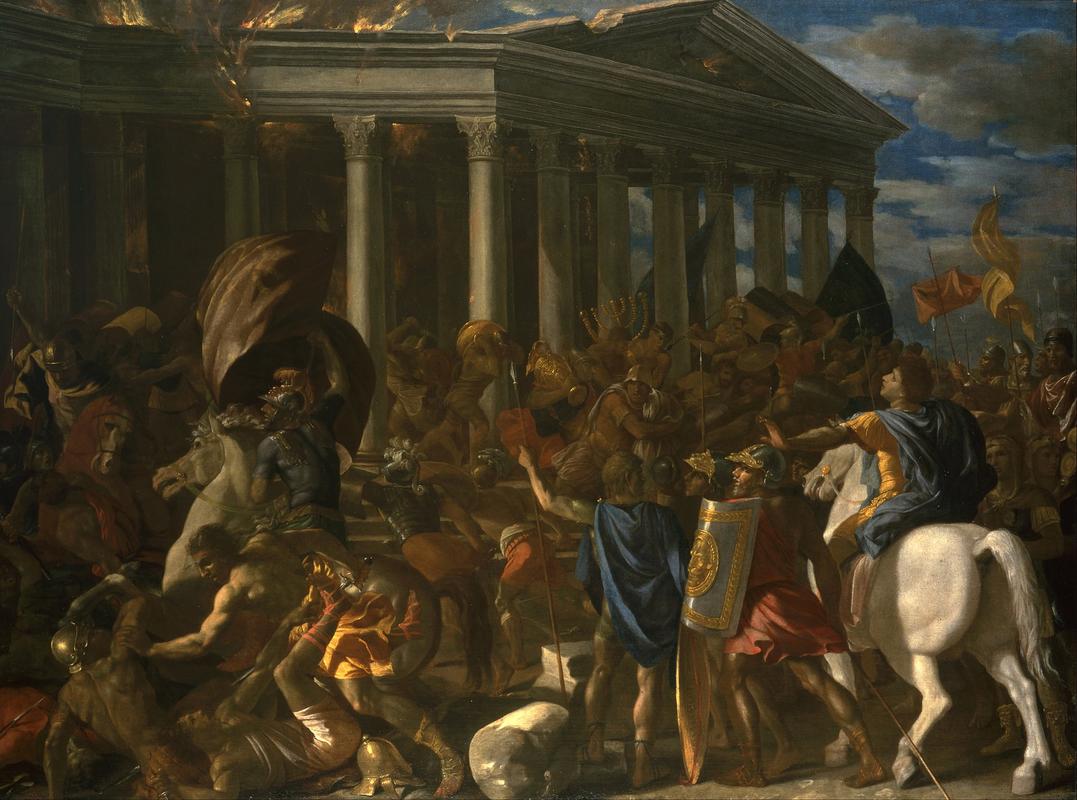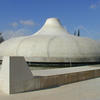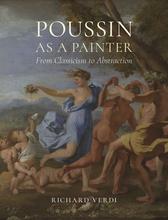More about The Destruction and Sack of the Temple of Jerusalem
- All
- Info
- Shop

Sr. Contributor
Commissioned by the Pope's nephew, Cardinal Berberini, and gifted to Cardinal Richelieu (the real life bad guy in The Three Musketeers) to help cool warlike relations between the Papacy and France.
The painting depicts the Roman emperor Titus as he fails in commanding his troops to save the burning temple of Jerusalem. To be fair, the troops are so caught up in burning the temple, they can't hear the emperor. The message seems to be, "Hey Richie Rich, with all due respect, you're making it so my uncle might invade France and, badda bing, badda boom, stuff breaks. Sincerely, 'Bourbon' Berberini." In any case, the work established Poussin as a sought-after master painter.
The painting was considered lost from 1675 until 1995 when brought to auction at Sotheby's. The auction house was contracted to sell a 1000-painting collection by the estate of Ernest Onians, The Pudding King of Suffolk County (yes, that was a real nickname (and, double yes, the Urban Dictionary page Pudding King needs a definition)). Onians earned the sobriquet by amassing a fortune shelling pigswill from London's trashed leftovers during and after World War II. Onians' bought Poussin's painting at a garage sale for about $20 around 1950, whereafter it was stored in a chicken coop until the auction.
When Sotheby's took over, however, the work was mistaken as Pietro Testa's Sack of Carthage. We assume this had quite a bit to do with Sotheby's facing 1000 works in need of identification on the eve of an upcoming three day weekend, and just assuming the one covered in chicken-sh*t was labeled correctly. As such, the work was valued at $24,000. A London art gallery thought this evaluation spurious, however, and shelled out almost $250,000 to win the work. Having a Poussin expert on the art gallery's payroll trolling through the auction catalog probably aided in their decision to attain the work "at any cost."
The bet paid off. With a confirmation from the Louvre that the work was a Poussin, the Rothschild Foundation secured the painting for the Israeli Museum in Jerusalem for $7.2 million. Recent estimates value the painting at nearly $20 million. The auction brought riches to many, spiritual, emotional, monetary. Sotheby's, meanwhile, was left hearing the dulcet tones of "Bitch better have my money."
Onians' estate went hog wild and sooey!-d the auction house for negligently failing to properly identify the work, thereby devaluing it at auction by more than $7 million. The case settled out of court for an undisclosed sum, after two-and-a-half years of litigation. A large sum of the money will go to take care of The Pudding King's' sole heir: a sow with three teeth named Mayor Purdy.

Contributor
Different attackers destroyed the Temple at Jurusalem at various times. In this painting, it's the Romans' turn.
The Romans did a very thorough job of it. The temple has not recovered to this day. Not happy to only set the temple on fire and loot everything lootable, the Romans also massacred the locals. One eyewitness recalls the horrific scene:
"The Temple Mount, everywhere enveloped in flames, seemed to be boiling over from its base; yet the blood seemed more abundant than the flames and the numbers of the slain greater than those of the slayers. The soldiers climbed over heaps of bodies as they chased the fugitives. The heap of corpses mounted higher and higher about the altar; a stream of blood flowed down the Temple's steps, and the bodies of those slain at the top slipped to the bottom."
The general in charge, Titus (son of the emperor Vespasian), ordered his men to stop the rampage. The soldiers were caught up in the frenzy of the bloodbath and ignored him. They went completely beserk instead.
Poussin must have had some bloodlust, as he painted three versions of this event.












